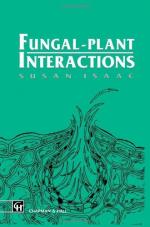|
This section contains 887 words (approx. 3 pages at 300 words per page) |

|
In plant communities each plant might interact in a positive, negative, or neutral manner. Plants often directly or indirectly alter the availability of resources and the physical habitat around them. Trees cast shade, moderate temperature and humidity, alter penetration of rain, aerate soil, and modify soil texture. Plant neighbors may buffer one another from stressful conditions, such as strong wind. Some plants make contributions to others even after they die. Trees in old-growth forests that fall and decompose ("nurse" logs) make ideal habitat for seeds to sprout, and such a log may be covered with thousands of seedlings. While effects on the physical habitat are consistent aspects of communities, plant-to-plant competition to preempt resources also takes place, and in some instances chemical interactions occur between species.
Commensalism occurs as one species lives in a direct association with another (the host), gaining shelter or some other environment...
|
This section contains 887 words (approx. 3 pages at 300 words per page) |

|


